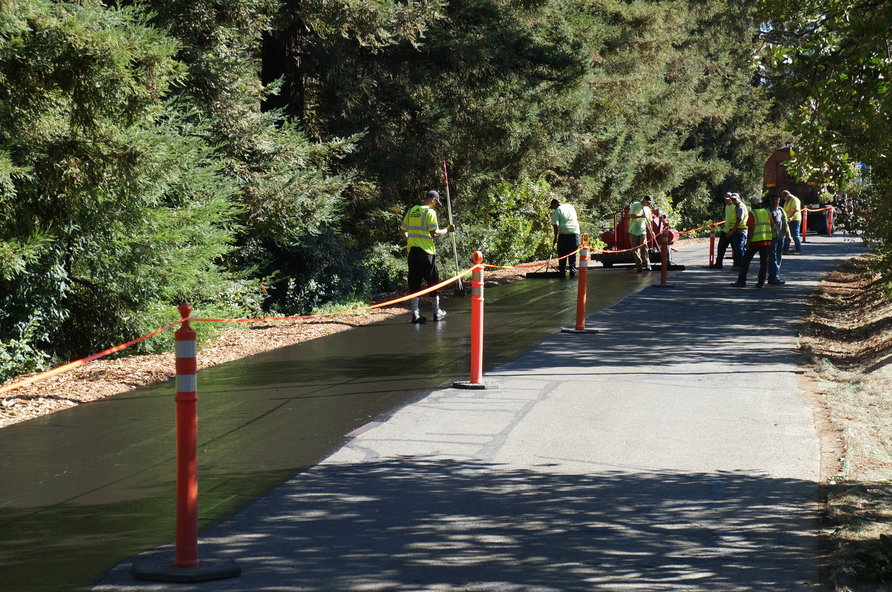Sealcoating Technology
Harsh weather conditions and repeated use of roads and driveways often result in cracks and uneven surfaces in the asphalt surface, leading to a loss of aesthetic appeal and an increased chance of accidents. If you leave your driveway or parking unattended, in time it will fully deteriorate, and you will need to do extensive repairs, which often involves completely replacing the asphalt. It is far less expensive to invest in a protective seal coat, which will ensure your driveway stays crack-free and retain its uniform smoothness. Sealcoating should be done by a professional, so we reached out to Brandon who has been sealcoating Houston for over a decade. He is going to share some great information with us today regarding seal coating.
What is Asphalt Sealcoating?
Asphalt seal coating is in essence, a protective coat between the asphalt surface and destructive environmental elements. Thus, seal coating is used to seal in the functional properties of asphalt and protect it from developing cracks, potholes, and depressions, thereby prolonging its pavement life.
In this respect, it is a lot like paint used to protect wooden surfaces from environmental degradation.
What Are The Benefits of Asphalt Sealcoating?
- To Prevent Premature Asphalt Repairs
When asphalt is exposed to the sun, wind, and water, it oxidizes, causing the pavement to become brittle and fragile. A seal coat slows down the oxidation process and also helps the pavement to get rid of water, preventing it from entering the porous asphalt material. Water from rain or thawed snow is the biggest threat to asphalt surfaces. The seal coat also protects the pavement from oil or chemical spills and the harmful effects of UV rays which can quickly erode an unsealed asphalt surface. Where an unsealed asphalt surface may last for 10 years, a seal coated one will easily last up to 15 years.
- To Provide Added Friction for Cars
Over time, excess traffic causes the tiny asphalt particles to flatten and smoothen out. This makes the roadway slippery and makes it harder to stop your vehicle. A seal coat adds another layer of texture to the pavement, increasing surface friction. This helps the car’s tires get a better grip on the road and prevent possible accidents. Also, a seal coat preserves the beauty of newly laid asphalt and keeps the roads looking black and smooth for years.

What are the different types of Asphalt Sealcoating?
There are primarily three types of asphalt seal coating.
Refined Coal Tar
This is the most common and widely used form of asphalt sealers. The stable coal compounds aren’t affected by the disintegrative elements of the environment. This type of sealer offers the best protection against water and weather conditions and also delays wearing of the road for the longest duration. (about 5 years)
Asphalt Emulsion Sealcoatings
This form of sealer is easier to apply and does not give off noxious odors and doesn’t irritate the skin either. Asphalt based sealers offer better protection than coal based ones against chemicals and oil spills, but it is the wrong choice for harsher climactic conditions, especially somewhere where salt water may be prevalent.
Petroleum Based Sealcoats
Petroleum based seal coats offer most of the advantages of the above two types but fall short of the other two kinds in the extent of its efficacy.
In addition, sand, water, and other additives are added to the seal coats. Water helps in adding fluidity to the seal coat mix and maintains its uniformity. Sand is used to hiding minor surface defects and add surface traction to roads. Additives are used to impart the dark black color seen on roads, and also helps in drying the seal coat faster.
Application Techniques
Before application, the asphalt must be clean and dry. This can be accomplished with sweepers and blowers. The seal coat is applied with either pressurized spray equipment or automatic squeegee machines. The mix must be continuously agitated to maintain its uniformity. Two coats are typically applied, and you should leave the sealer alone for about 48 hours while it hardens and sticks to the asphalt. The usual amount of sealer used is around 1 gallon for one layer of 60 square feet. Ideal weather conditions for application are low humidity and high temperatures.
Regardless of the type of seal coat used, it is important to remember that a seal coat cannot compensate for pavement defects as it is not a crack filler or a leveling material. It simply prevents further degradation of the asphalt surfaces. The initial defects must be filled or leveled before you apply a seal coat.
If you are in need of a professional seal coat company, contact Brandon over at http://www.sealcoathouston.com/ and he and his crew will make your asphalt look new again. They do a great job, and we know you will love the work and customer service provided.


Leave a Reply